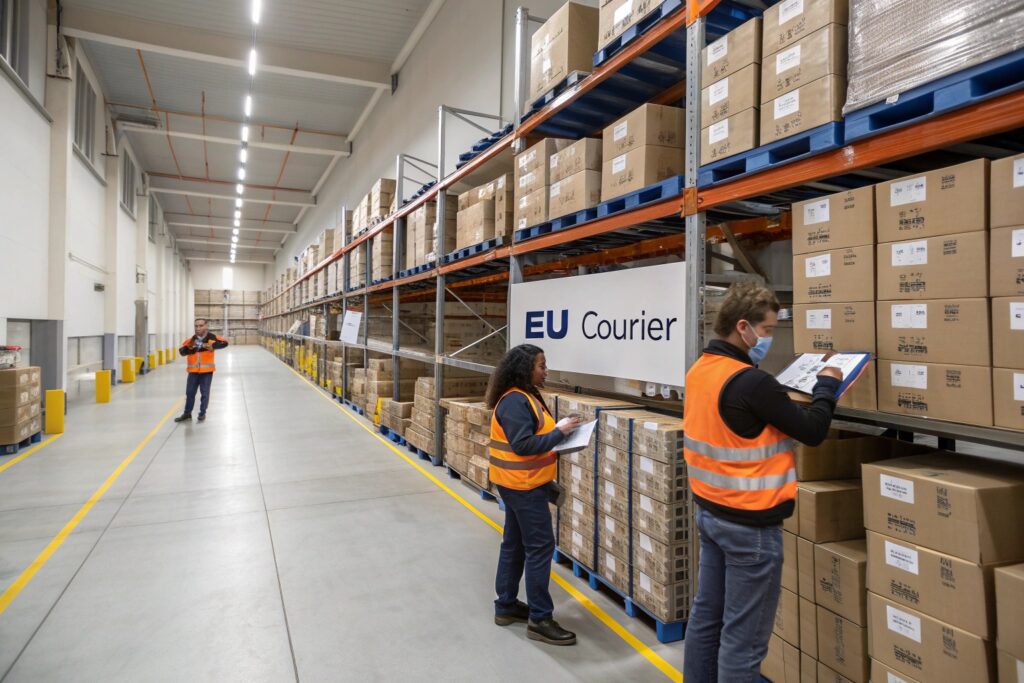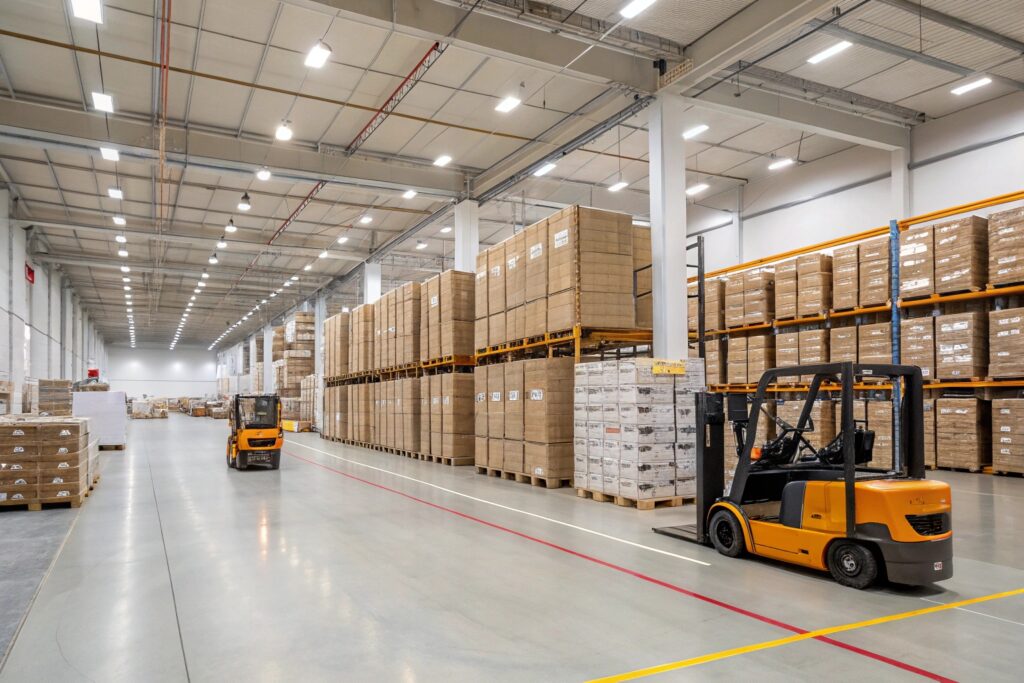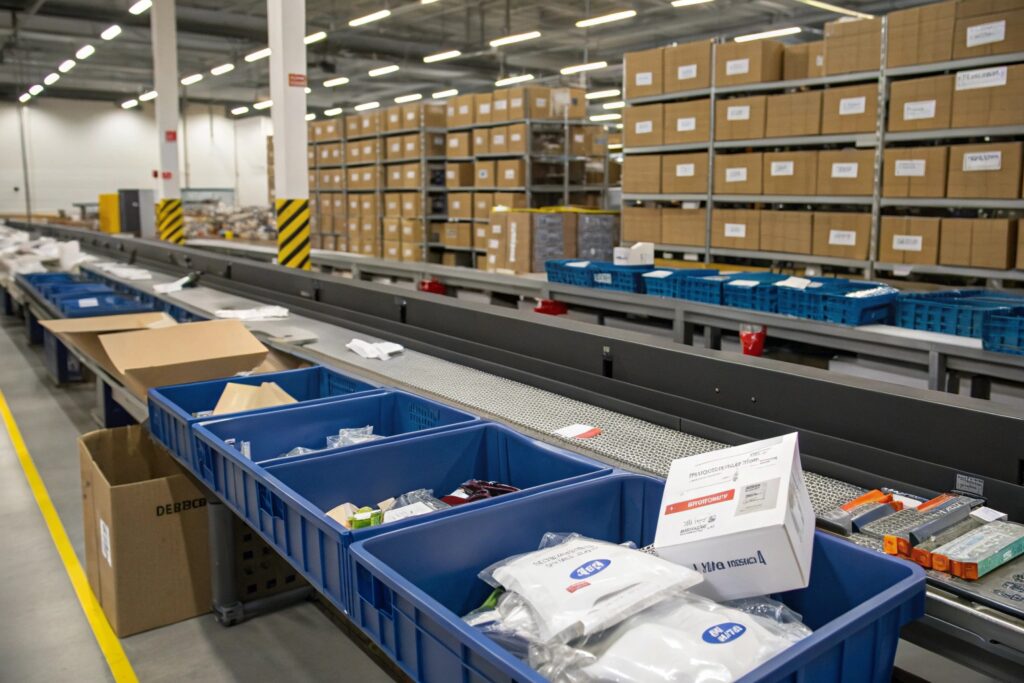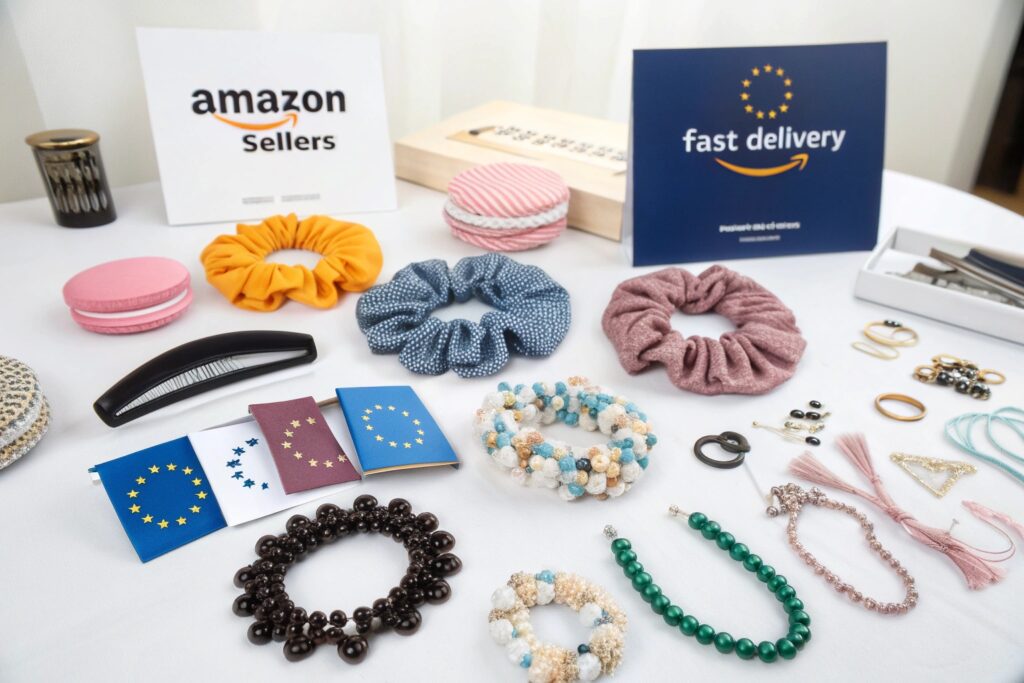Finding a reliable supplier is only half the battle when importing fashion hair accessories like clips, headbands, and veils into Europe. Delays in customs clearance, high shipping costs, and long transit times often erode profit margins and stress your operations—especially during peak seasons.
A supplier with regional warehouses in Europe can reduce lead times, simplify logistics, and help you respond to market demand faster. This model, once used mostly by enterprise retailers, is now being adopted by agile accessory brands and sellers who need speed without sacrificing flexibility.
By strategically stocking popular SKUs closer to EU end-customers, you gain an edge over competitors still dealing with multi-week delivery cycles from Asia. In this guide, I’ll show you how.
How Does EU-Based Stock Improve Lead Time?
If your supplier ships directly from China, standard air freight takes 5–10 days, while ocean freight can take up to 40 days. Now, factor in customs processing delays, final-mile courier issues, and port congestion—and you're looking at even longer timelines.
When inventory is pre-positioned in an EU regional warehouse (like in Germany, the Netherlands, or Poland), fulfillment can happen within 24–72 hours across most of Europe.

What’s the Cost Comparison Between Local vs. Direct Shipping?
Local stock in Europe can reduce overall logistics costs despite higher storage fees. Here's why:
| Method | Transit Time | Import Duties | Last Mile Delivery | Avg Cost (Per Kg) |
|---|---|---|---|---|
| China → EU Direct | 10–45 days | Payable by buyer | Cross-border courier | $4.5–$7.5 |
| EU Warehouse → EU Customer | 1–3 days | Already cleared | Local logistics (DHL/DPD) | $2.5–$4 |
This helps reduce refund rates and increases customer satisfaction.
Can Local Warehousing Support Flash Sales?
Absolutely. With inventory close to customers, you can support seasonal flash sales, influencer campaigns, or pop-up events without having to wait for restocks from Asia.
Explore fast delivery options through ShipBob, and localized EU storage by Byrd.
How Do Regional Warehouses Support Customs Efficiency?
One of the biggest pain points in international logistics is customs. Without proper documentation or clearance strategy, your packages can be stuck for days—or worse, returned.
A supplier operating through EU warehouses has already cleared goods through customs under their own IOSS (Import One-Stop Shop) or VAT number. That means your orders ship as domestic or intra-EU freight, avoiding paperwork.

What’s the Advantage of IOSS-Registered Fulfillment?
For orders under €150, IOSS enables suppliers to collect VAT at the point of sale. This reduces customs delays and avoids surprise charges to your customers.
Warehouses based in countries like the Netherlands or Germany typically operate under IOSS with efficient customs brokers.
Read more about IOSS on the EU Tax Portal or explore Avalara's VAT automation.
Can This Help Avoid Delivery Rejections?
Yes. Many rejected parcels occur because customers refuse to pay unexpected VAT or customs fees.
EU-based fulfillment avoids these issues entirely by sending goods as “delivered duty paid” (DDP). Explore Zonos DDP solutions or Easyship customs tools.
Does EU Warehousing Reduce Return Costs?
Returns are inevitable in fashion—especially for items like hair accessories where color, size, or style expectations vary.
Without a local return address, you risk higher return shipping costs, lost parcels, and upset customers who can’t afford to send products back to China.
With a warehouse in Europe, you can offer affordable return labels and inspect items quickly before restocking or processing refunds.

How Does This Impact Customer Satisfaction?
European customers expect seamless returns. With local warehousing, you can offer prepaid return labels, fast refunds, and high return-to-stock ratios.
This builds trust and increases re-purchase intent.
Return services can be handled via Sendcloud or ReturnGo, both of which integrate with EU fulfillment centers.
Are There Reverse Logistics Benefits?
Definitely. Returned stock can be reprocessed, repacked, or bundled for flash sales, limiting losses.
Regional warehouses often offer value-added services like repackaging or minor repairs—especially important for fragile pearl hairpins or embellished clips.
Learn about reverse logistics at Shopify’s return guide or Returns International.
What Kind of Brands Benefit Most from EU Inventory?
Not all brands need local warehousing, but many benefit immensely—especially those selling to EU retail chains, Amazon marketplaces, or direct to consumer.
If you frequently participate in trade fairs, seasonal promos, or influencer launches in Europe, having regional inventory allows for fast replenishment and fulfillment.
It’s also essential for those offering next-day delivery through Amazon FBA or Shopify’s EU delivery zones.

What SKUs Should Be Stocked Locally?
Start with your fast-moving SKUs—top-selling velvet scrunchies, neutral-toned claw clips, or trendy pearl barrettes.
Test warehouse response by stocking 10–20% of your catalog and track delivery KPIs.
More on inventory strategy from Cin7 inventory blog or DEAR Systems.
Is Local Inventory a Must for Amazon EU?
If you use Amazon FBA in Europe, you must store inventory in EU fulfillment centers. This ensures Prime delivery and listing eligibility.
Suppliers with Amazon-ready packaging and labeling save time. You can also ask your supplier to prep FBA shipments from their EU warehouse directly.
Check Amazon’s Pan-EU requirements or use ZonGuru’s prep guide.
Conclusion
Working with a supplier that maintains regional warehouses in Europe is a game-changer for hair accessory businesses that want to scale smartly.
You’ll benefit from faster deliveries, better customs handling, reduced return costs, and stronger EU brand positioning.
If you want to compete with fast-fashion brands or scale your D2C operations in Europe, this is the logistics upgrade that will give you an edge.








